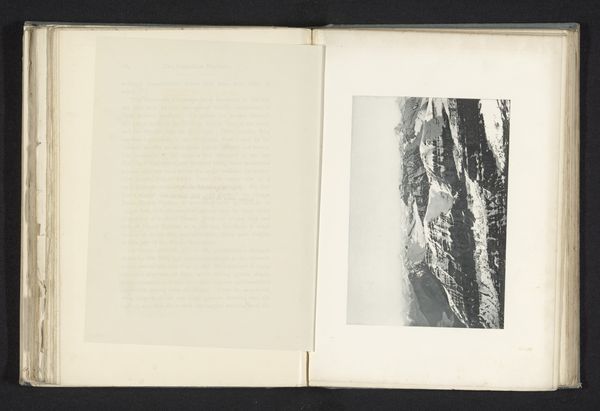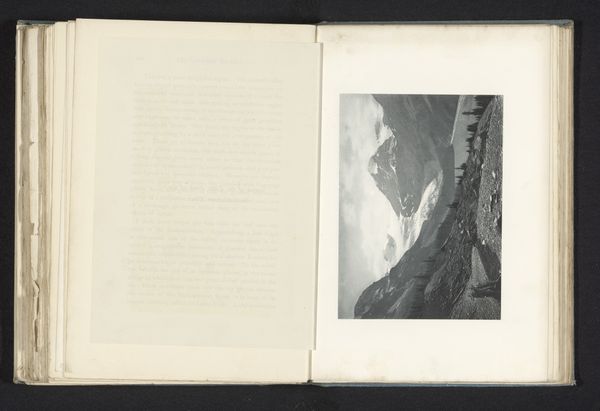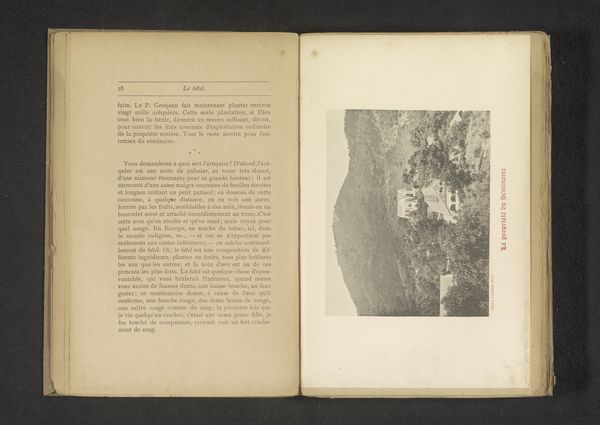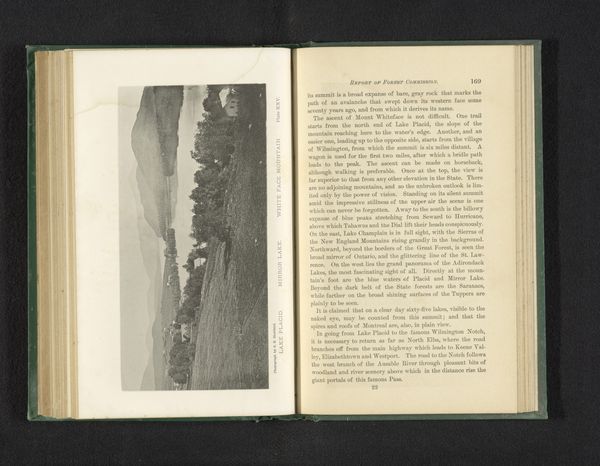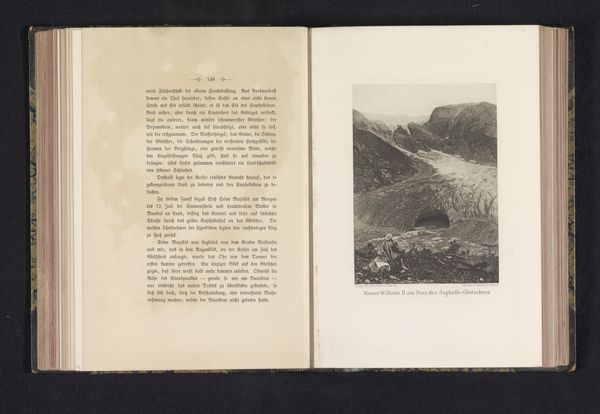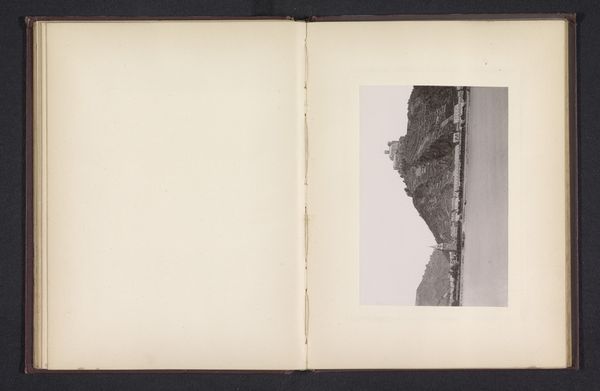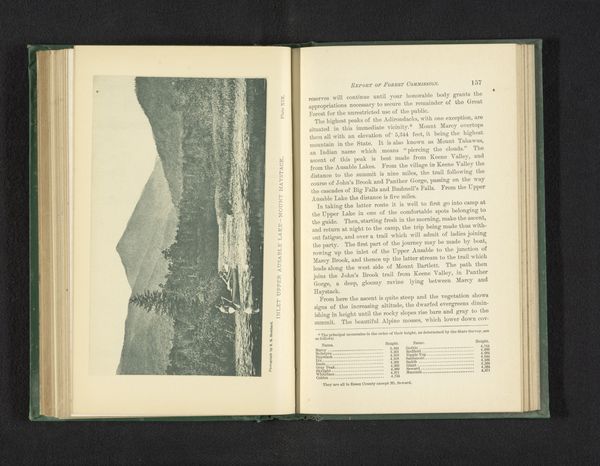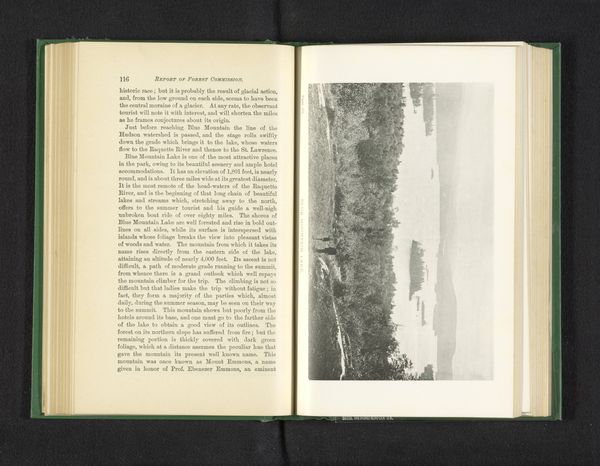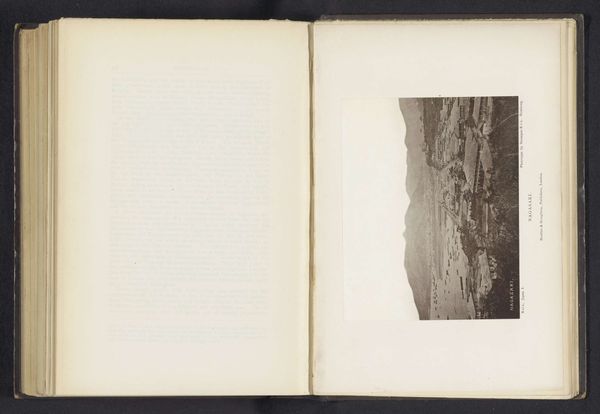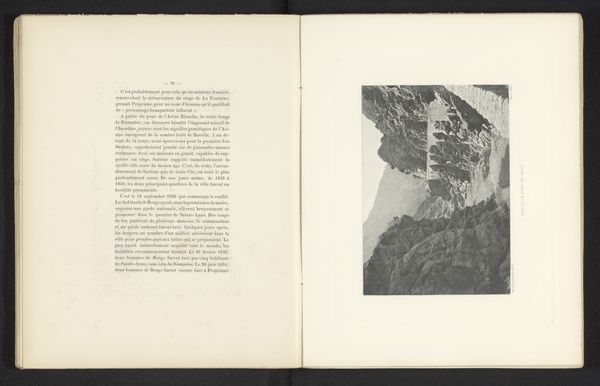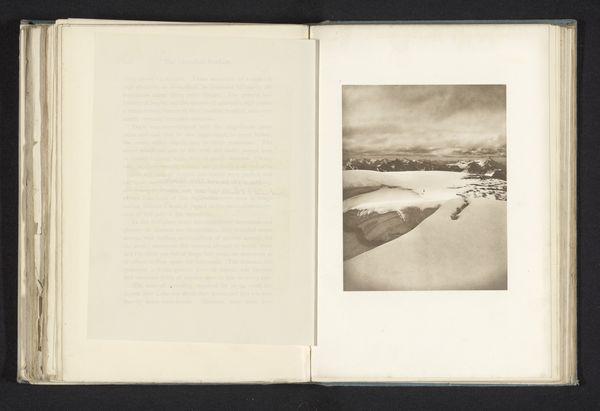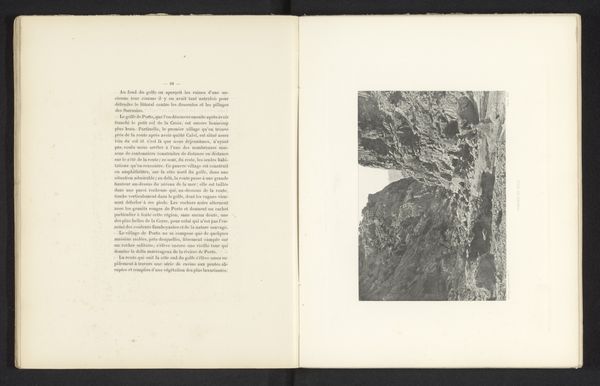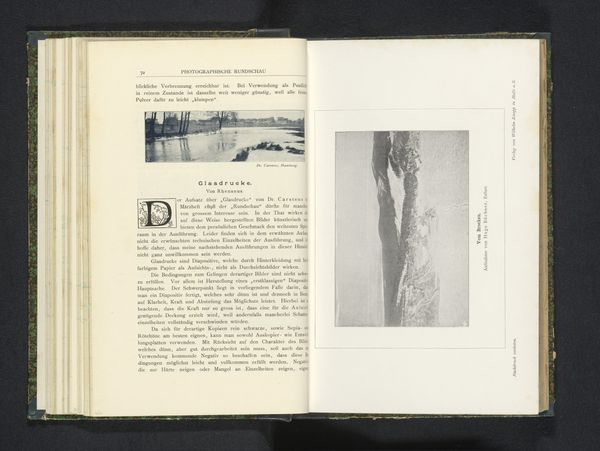
photography, gelatin-silver-print
#
landscape
#
river
#
photography
#
orientalism
#
gelatin-silver-print
Dimensions: height 119 mm, width 172 mm
Copyright: Rijks Museum: Open Domain
Curator: This gelatin-silver print, titled "Reisgezelschap met riksja's op de oever van een rivier te Japan," which translates to "Travel company with rickshaws on the bank of a river in Japan", is believed to be photographed before 1883, by Hugues Krafft. It offers a window into a specific moment in time and travel culture. What are your first impressions? Editor: Immediately, I see a clear emphasis on the stark contrasts. The sharp geometry of the riverbank against the textured density of the trees above gives me a feeling of both peace and contained activity, like a meeting place on the edge of the wild. Curator: Hugues Krafft was documenting his travels, which inherently raises questions of power dynamics and representation. These images were, after all, made by a Western European looking at Japan through a particular lens informed by Orientalism. How do you feel that impacts its meaning today? Editor: The rickshaws serve as key symbols. They represent transit, but also suggest a human-powered system—a visible hierarchy, especially within the colonial context. The river also is loaded with meaning—serving as both a tranquil passage, and perhaps a boundary, or separation of worlds. This interplay certainly hints at the complexities embedded within the scene. Curator: I agree, the rickshaws, while practical, represent a social structure and potentially problematic power relationship in this particular time period. I find the focus on landscape rather than individual portraits speaks to the common 19th century travelogues where places, especially people in faraway locations, were catalogued and often exoticized. The landscape almost seems to consume the figures. Editor: It's the act of viewing, then, that perpetuates a relationship between the observed and the observer. Curator: Precisely. Understanding the colonial gaze is crucial, revealing the intertwined stories of global interaction and its imprint on art and visual culture. Editor: I find myself intrigued by how such simple imagery carries so many layers of history, of journeys and social structures. It calls upon us to look deeper and question the symbols present in the everyday. Curator: This photograph provides a fascinating starting point for critical engagement with not just the visual but the ethical dimensions of travel, representation, and history.
Comments
No comments
Be the first to comment and join the conversation on the ultimate creative platform.
